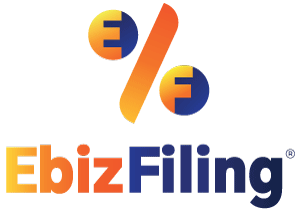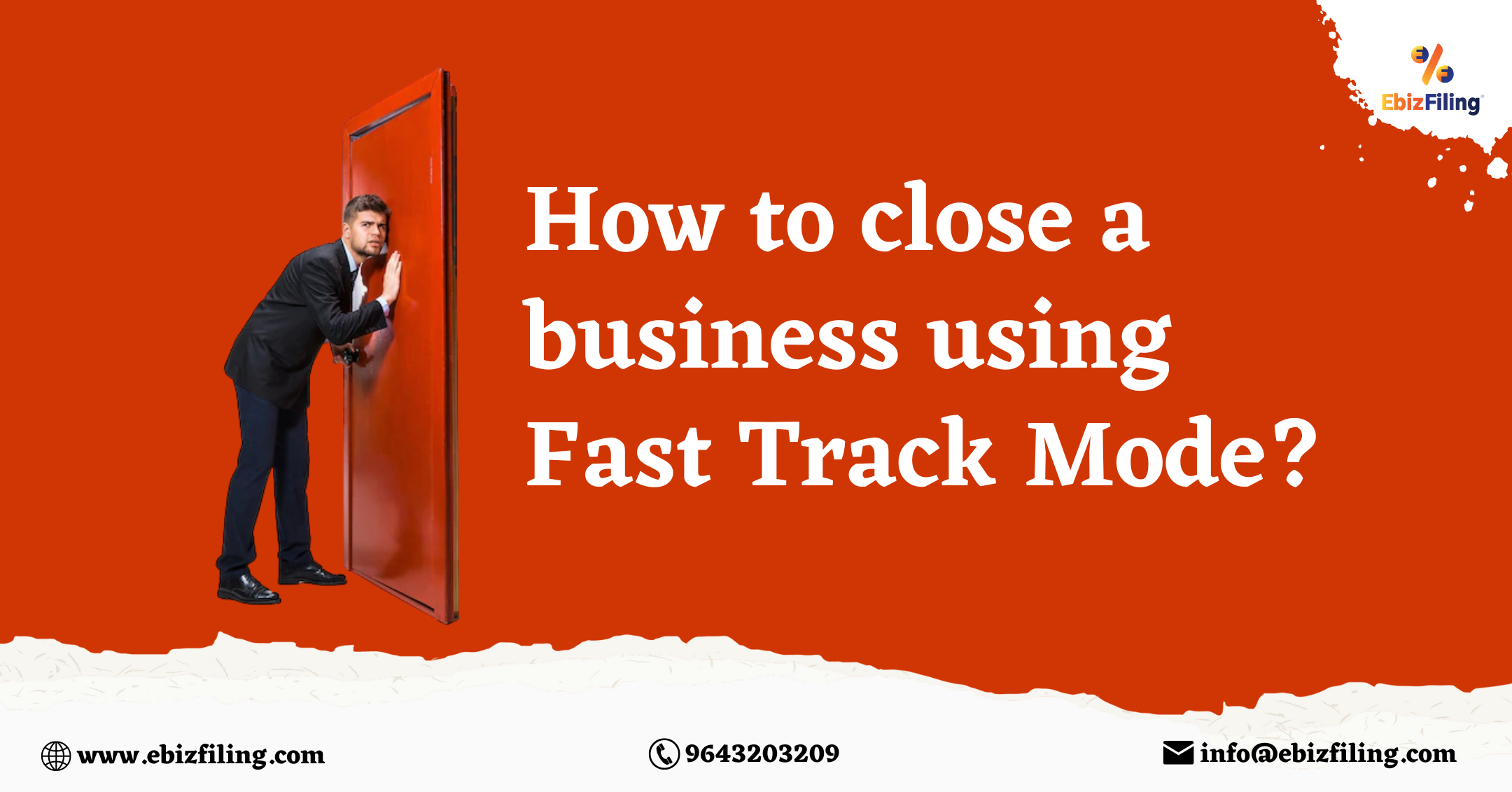What is the Fast Track Exit (FTE) Scheme?
The Fast Track Exit (FTE) Scheme is a simplified method introduced by the Ministry of Corporate Affairs (MCA) to help companies that are non-operational or defunct close their business legally and quickly. It allows eligible companies to apply for strike-off without going through lengthy winding-up procedures.
Under this scheme, companies can file Form STK-2 along with prescribed documents to request removal of their name from the Register of Companies. Once approved, the company is officially dissolved, saving time, effort, and legal hassle for promoters.
Who is Eligible and Not Eligible for FTE?
Every company cannot apply for Fast Track Exit. The Ministry of Corporate Affairs has defined clear eligibility and disqualification rules that must be met before filing for strike-off.
| Eligible Companies | Not Eligible Companies |
| Defunct companies (inactive for 2 financial years) | Listed companies |
| Companies with no assets or liabilities | Companies under investigation or prosecution |
| Those who’ve filed all pending returns | Companies with outstanding liabilities |
| No ongoing litigation or regulatory actions | Companies that recently changed name or business |
| Unlisted private, public companies & OPCs (if inactive) | Section 8 and vanishing companies |
Step-by-Step Process for Applying Fast Track Exit
The Fast Track Exit process is simple but must be followed carefully to avoid rejection by the Registrar of Companies. Below is a step-by-step guide to help you file for strike-off correctly.
- Step 1: Hold a Board Meeting: The directors must call a board meeting to pass a resolution for closure and authorize one director to file the strike-off application.
- Step 2: Take Shareholders’ Approval: A general meeting must be held to pass a special resolution approving the strike-off. This is mandatory for private companies.
- Step 3: Prepare Statement of Accounts: A Chartered Accountant must prepare and certify a statement showing zero assets and liabilities, not older than 30 days from the date of application.
- Step 4: Draft and Sign Affidavit & Indemnity Bond: Every director must sign an affidavit (Form STK-4) confirming the company has no dues and an indemnity bond (Form STK-3) to protect against future liabilities.
- Step 5: File Form STK-2 on MCA Portal: Submit the online application with all required documents and a government filing fee of ₹10,000 using the Director’s DSC.
- Step 6: ROC Verifies and Issues Public Notice: Once filed, the ROC examines the application and publishes a notice on the MCA website. If no objections are received within the prescribed time, the company is struck off.
List of Documents Required for FTE Filing
To successfully file for strike-off under the Fast Track Exit Scheme, the following documents must be prepared, signed, and submitted with Form STK-2:
- Board Resolution: A certified copy of the resolution passed by the board approving the strike-off.
- Special Resolution or Consent of Shareholders: Approval of members through a general meeting or consent letters from all shareholders (in case of OPC or small companies).
- Indemnity Bond (Form STK-3): Signed by every director on non-judicial stamp paper, indemnifying any future liabilities.
- Affidavit (Form STK-4): Declaration by all directors confirming that the company has no assets, liabilities, or legal proceedings.
- Statement of Accounts: Certified by a Chartered Accountant, showing nil assets and liabilities, not older than 30 days from the date of filing.
- PAN Card and Aadhaar of Directors: Self-attested ID proofs of all directors for KYC verification.
- Copy of Latest Acknowledged ITR (if any): If the company has filed any income tax return, its latest copy should be enclosed.
Time Taken and Government Fees Involved
Before filing for Fast Track Exit, it’s important to know the expected timeline and applicable government charges for processing the application. Below is a quick overview:
| Details | Information |
| Government Filing Fee (Form STK-2) | ₹10,000 (non-refundable) |
| Professional Fees (CA/CS/Lawyer) | Varies based on service provider |
| Time to Prepare Documents | 5 to 7 working days (approx.) |
| ROC Processing Time | 60 to 90 days after successful submission |
| Public Notice Period | 30 days from the date of ROC notice |
Post-Filing Outcomes: What Happens After Strike Off?
Once the Form STK-2 is filed and approved, the Registrar of Companies (ROC) initiates the strike-off process. Here’s what happens next:
- Company Name is Removed from MCA Records: The ROC strikes off the company’s name from the Register of Companies and updates the MCA database.
- Public Notice is Issued in the Official Gazette: A final notice confirming the strike-off is published, making the closure publicly known.
- Company Legally Ceases to Exist: The company loses its legal status and cannot enter into contracts, sue, or be sued.
- Directors Are Relieved from Duties: Once strike-off is complete, directors are no longer liable for the company’s operations, except for fraud or false declarations.
- No Future Operations Allowed: The company cannot resume business unless revived through the National Company Law Tribunal (NCLT).
Fast Track Exit vs Voluntary Winding Up
Both Fast Track Exit (FTE) and Voluntary Winding Up are legal methods to close a company, but they differ in process, cost, and applicability. Here’s a simple comparison:
| Particulars | Fast Track Exit (FTE) | Voluntary Winding Up |
| Applicability | For defunct or inactive companies | For solvent companies that choose to close operations |
| Governing Law | Section 248 of the Companies Act, 2013 | Section 304–323 of Companies Act, 2013 |
| Regulatory Body | Registrar of Companies (ROC) | National Company Law Tribunal (NCLT) and ROC |
| Process Duration | 2 to 3 months | 6 to 12 months or more |
| Cost Involved | Lower (₹10,000 govt. fee + professional fee) | Higher (liquidator’s fee, professional fee, etc.) |
| Use of Liquidator | Not required | Mandatory to appoint a liquidator |
| Public Notice Requirement | Yes, issued by ROC after application | Yes, in newspapers and the Official Gazette |
| Revival Option | Can be revived via NCLT on valid grounds | Not easily revived once liquidation is complete |
| Best Suited For | Small, inactive or defunct companies | Active companies choosing to close operations voluntarily |
How EbizFiling Can Help?
Filing for Fast Track Exit involves legal paperwork, accurate filing, and timely coordination with the ROC. EbizFiling can simplify this entire process for you through the following support:
- Eligibility Assessment: We check if your company qualifies for Fast Track Exit under MCA rules before proceeding.
- Document Drafting & Preparation: Complete support in drafting affidavits, indemnity bonds, board resolutions, and more.
- Filing of STK-2 Form: Our experts prepare and file the STK-2 form online with the MCA, using valid DSC and correct attachments.
- Liaison with the ROC: We handle follow-ups, clarifications, and ROC communications until the strike-off is complete.
- End-to-End Compliance Support: From CA-certified financials to closure, we ensure all legal steps are covered under one roof.
Conclusion
Fast Track Exit is a quicker, cost-effective way to close down an inactive company in India. It helps avoid the lengthy process of formal winding up. EbizFiling ensures a smooth and compliant closure from start to finish.
Suggested Read :
Legal Consequences of Strike Off OPC
LLP Strike-off with inactive bank accounts











Reviews
Gadilinga
30 Sep 2019Excellent support which i never expected. their timely response, guidance, reminding, problem solving, pocket friendly. Ms arthi, Ms ishani, Ms vaishali and few others i dont know their names provided service like my own staff.
Mamta Tanna
20 Dec 2017More power to the Ebizfiling team for being so generous and systematic in the whole process of ESIC registration.
Pavani Reddy
18 Apr 2022I took trade mark registration from Ebizfiling india private limited thank you for registration and completing the process on time.
September 5, 2025 By Dhruvi D
Can We Apply for the Strike Off a Company Immediately After Incorporation? Introduction One legal method of shutting down an inactive firm is to strike off the company after it has been incorporated. After starting a business, many entrepreneurs question […]
June 24, 2025 By Team Ebizfiling
How to Address Outstanding Liabilities Before LLP Strike Off? Introduction An LLP (Limited Liability Partnership) in India lets partners protect their personal assets while running a flexible business. But if the LLP isn’t doing business anymore, you need to officially […]
June 14, 2025 By Team Ebizfiling
Closing a Company in 2025? File Form STK-2 Before It’s Too Late Introduction Looking to close your company in 2025? Filing Form STK-2 with the Ministry of Corporate Affairs (MCA) is the official process to strike off a company. If […]